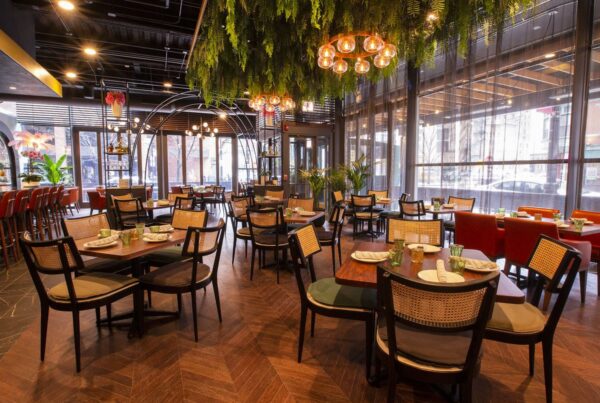The rhythm of the Gulf Coast is deeply tied to the seasons—sun-drenched summers, breezy spring days, tranquil autumn evenings, and even the quieter, cooler months of winter. For restaurants along this stunning stretch of shoreline, each season brings a unique energy, a shift in customer habits, and a change in local ingredients. Unlike other parts of the country where the restaurant scene remains relatively stable year-round, Gulf Coast eateries must move in harmony with the tides—both literal and figurative. Understanding and embracing the importance of seasonality isn’t just smart; it’s essential to staying successful, relevant, and profitable in one of the most competitive hospitality regions in the U.S.
Seasonality Affects More Than Just the Weather
When people think of the seasons, they often think of temperature and weather patterns. But for Gulf Coast restaurants, the concept of seasonality goes much deeper. It’s about people—the ebb and flow of tourists, snowbirds, and locals. It’s about the availability of fresh, local ingredients like oysters, shrimp, and blue crab. And it’s about how the Gulf Coast lifestyle changes, from beach days in July to cozy nights in December.
Restaurant owners and chefs have to adjust everything from staffing levels to menus, hours of operation, and marketing strategies based on these seasonal shifts. It’s a balancing act that requires foresight, flexibility, and a deep understanding of your audience and community.
Tourist Season: A Blessing and a Challenge
The Gulf Coast sees a massive influx of tourists each year, especially during spring break, summer vacation, and major holidays like Memorial Day and the Fourth of July. During these peak times, restaurants can expect packed patios, long waitlists, and the kind of business that can make or break the fiscal year. For restaurants that rely heavily on tourism, this is the time to shine—and to prepare.
Planning for the peak season means hiring and training extra staff, stocking up on inventory, extending hours, and possibly even creating special menus that are efficient to prepare and serve. It’s also a prime time to focus on branding, because a great vacation meal can turn a one-time visitor into a lifelong fan. However, this period also comes with its challenges. Higher demand puts strain on kitchens and service teams. Food costs rise. And customer expectations soar, especially among vacationers who are willing to splurge on memorable dining experiences.
Off-Season: A Time for Reflection and Reinvention
After the summer crowds thin out and the beach towels are packed away, the Gulf Coast shifts into its slower season. For many restaurants, this is a critical time to reevaluate and refine. Without the rush of tourists, there’s more time to focus on locals, experiment with new recipes, host events, or update the dining space.
Some restaurants even close for a few weeks to renovate, deep-clean, or give their staff a much-needed break. Others use the downtime to offer locals-only specials, wine tastings, or chef’s table experiences that deepen community engagement. The off-season also provides space to plan for the future—analyzing what worked and what didn’t, improving systems, and getting creative with menus or social media content.
Seasonal Ingredients: The Soul of Gulf Coast Cuisine
One of the most compelling reasons to embrace seasonality in Gulf Coast restaurants is the rich availability of local, seasonal ingredients. The waters of the Gulf are a bounty of seafood treasures. But just like the tourists, they have their own seasonal patterns.
For example, oyster season typically begins in the fall and runs through early spring, a time when the oysters are at their plumpest and most flavorful. Blue crab peaks in the summer, while shrimp have different harvest windows depending on the variety. By designing menus around what’s fresh and available, restaurants can offer the best-tasting dishes and support local fisheries and farmers in the process.
Produce is equally seasonal, with juicy tomatoes, peppers, and watermelons at their best in summer, and sweet potatoes, kale, and citrus fruits flourishing in the cooler months. Building dishes around these ingredients not only enhances flavor and nutrition but also tells a story—one rooted in the land, the sea, and the season.
Seasonal Menus Keep Diners Engaged
Today’s diners are more informed than ever, and many are looking for experiences that go beyond the plate. Offering a seasonal menu tells your guests that you’re thoughtful, adaptive, and connected to your environment. It creates a sense of excitement and urgency. When people know that a special soft-shell crab dish or a local fig salad is only available for a few weeks, they’re more likely to come in and try it before it’s gone.
Rotating menus also keep your kitchen inspired. Chefs get to explore different ingredients, test new flavor combinations, and stay creative throughout the year. For loyal customers, seasonal dishes are a reason to return again and again—not just for consistency, but for what’s new and exciting.
Staffing for the Season: Building the Right Team
Seasonality doesn’t just affect what’s on the menu or who’s walking through the door—it also affects the people behind the scenes. During peak season, restaurants often need to hire seasonal workers to keep up with demand. These team members might include line cooks, servers, bartenders, hosts, and dishwashers who are brought on for a few months at a time.
Training and retaining these workers is crucial, especially since high turnover can impact the customer experience. Some restaurants choose to offer incentives to return year after year, while others focus on cross-training year-round staff to handle the seasonal spikes. Managing your labor force with the season in mind can lead to a more efficient, more effective operation.
Marketing That Mirrors the Calendar
Effective restaurant marketing on the Gulf Coast is never one-size-fits-all. It changes with the season, just like everything else. During spring and summer, it’s all about visibility—attracting out-of-town visitors with irresistible food photography, beach-friendly vibes, and clear information about your location and hours. Reviews, local directories, and travel websites become crucial tools.
In the fall and winter, marketing efforts may shift toward building loyalty with locals. This can include promoting weekly specials, highlighting new seasonal dishes, or showcasing behind-the-scenes content that builds connection and trust. Email campaigns, social media posts, and even collaborations with other local businesses can keep your brand relevant and top of mind even during the slower months.
Weathering the Storms—Literally
On the Gulf Coast, the term “season” also brings to mind hurricane season, which runs from June to November. Restaurants in this region must plan for the possibility of severe weather, including temporary closures, power outages, or even structural damage. Having a storm preparedness plan is not optional—it’s a necessity.
This includes securing insurance, backing up important business documents, maintaining clear communication channels with staff, and having contingency plans for food storage and spoilage. A restaurant’s ability to bounce back quickly from a weather event can mean the difference between short-term disruption and long-term disaster.
Supporting Local: A Seasonal Win-Win
One of the most positive outcomes of embracing seasonality is the opportunity to support other local businesses. Buying produce, seafood, and specialty products from nearby farmers and vendors strengthens the local economy and builds relationships that go beyond transactions. These connections can lead to partnerships, cross-promotions, and a stronger sense of community identity.
When diners see that a restaurant sources its shrimp from the bay just down the road or its herbs from a local greenhouse, it adds authenticity and appeal. People want to feel good about where they’re eating—and they want to know that their dollars are making a difference.
Final Thoughts: The Season Is Everything
On the Gulf Coast, seasonality isn’t just a concept—it’s a way of life. For restaurants, it brings both challenges and opportunities. Embracing the changes, rather than resisting them, is key to long-term success. Whether it’s adjusting menus, rethinking staffing, or refining marketing efforts, the most successful Gulf Coast restaurants are those that adapt with the tides.
By paying close attention to what the season offers—both in terms of ingredients and clientele—restaurants can thrive not just in the busy months, but all year long. It’s about being present, being prepared, and above all, being part of the unique and beautiful rhythm of the Gulf Coast.



